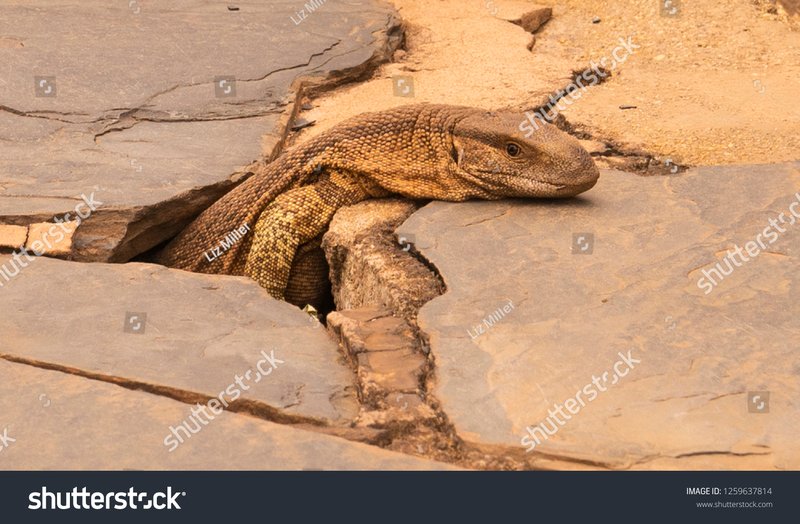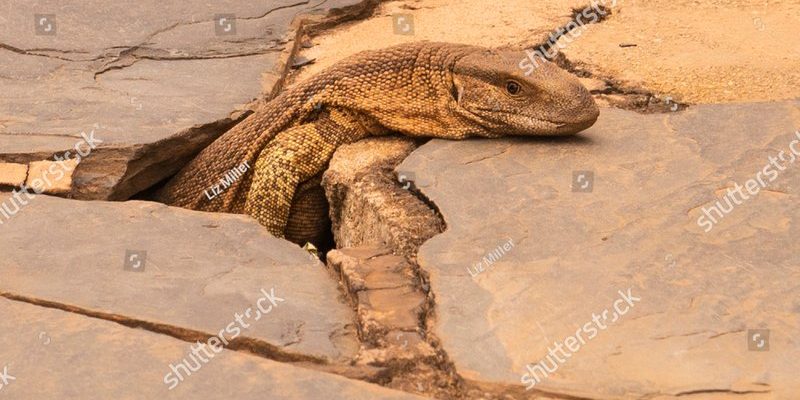
You might be wondering how these lizards manage to do all this. Do they have secret tricks up their sleeves? Well, in a way, they do. Monitor lizards possess various features and behaviors that allow them to cope with extreme temperatures, scarce water, and limited food sources. Let’s dive deeper into the world of these incredible reptiles and discover how they navigate the challenges of their environments.
Physical Adaptations for Survival
Monitor lizards come equipped with some impressive physical features that help them adapt to harsh conditions. One key adaptation is their strong, elongated bodies. This shape enables them to move quickly and efficiently, whether they’re sprinting across sandy desert terrain or climbing trees in search of food. Their sharp claws are another important tool; they help them dig for burrows or grab onto branches, enhancing their ability to escape predators and find shelter.
Another remarkable trait is their skin. Covered in tough scales, monitor lizards can withstand the heat of the sun and protect themselves from injuries. Interestingly, their scales also help with water retention. In arid environments, this means they lose less moisture, a crucial factor for survival where water is hard to come by. Basically, they’re like armored tanks, equipped to deal with the challenges their environments throw at them.
Coloration and Camouflage
You might notice that monitor lizards have a variety of colors and patterns on their skin, which serves an important purpose—camouflage. By blending into their surroundings, these lizards can evade predators and ambush their prey. For instance, a monitor lizard with earthy tones can easily hide among rocks or leaves, making it nearly invisible to both potential threats and unsuspecting meals.
This ability to camouflage is especially useful in environments like dense jungles where visibility is limited. Imagine trying to find a lizard hiding among tangled vines and shadows—it’s nearly impossible! This clever adaptation not only aids in hunting but also plays a vital role in their overall survival strategy.
Behavioral Strategies for Coping with Temperature
Monitor lizards are experts at regulating their body temperature, which is crucial for survival in extreme climates. Being ectothermic, they rely on external heat sources to warm their bodies. When it gets too hot, they seek shade or burrow into the cool earth. Alternatively, during colder days, you can find them basking in the sunlight to soak up warmth.
Here’s the thing: they can be pretty picky about their activity levels based on the temperature. When it’s sweltering, they’ll be less active, conserving energy while avoiding overheating. On the flip side, cooler temperatures get them moving, searching for food with a renewed vigor. It’s a balancing act that keeps them healthy and alive.
Finding Water in Arid Environments
In places where water is scarce, monitor lizards have some clever tricks up their sleeves. They can often detect moisture in the ground or find small puddles hidden among rocks. You might wonder how they manage to survive in such dry places when water is so limited. The answer lies in their ability to extract moisture from their food.
Many monitor lizards feed on insects, rodents, and even small birds, which contain valuable fluids. By consuming these creatures, they not only get nutrients but also hydration. Additionally, when drinking water, these lizards can absorb it rapidly, allowing them to rehydrate efficiently. It’s like they’ve found a way to turn their meals into a source of hydration. Pretty impressive, right?
Feeding Habits and Adaptability
When it comes to food, monitor lizards are opportunistic eaters. This means they’ll consume whatever is available in their environment, which adds to their adaptability. Their diet often includes insects, small mammals, birds, and even carrion. By being flexible in their eating habits, they can thrive even when their usual food sources are low.
One interesting behavior you might notice is their hunting techniques. Some species are skilled climbers, allowing them to hunt birds and eggs in trees. Others prefer to stalk their prey on the ground, relying on stealth and speed. This versatility is key to their survival—if one food source dries up, they can easily switch to another.
Social Behavior and Territory
Monitor lizards are generally solitary creatures, but they do have social behaviors that assist in survival. They mark their territory using scent, which helps keep other lizards away and minimizes direct competition for resources. You might think of it as leaving a “no entry” sign for others in their species. However, during mating season or when food is abundant, you might see them gathering in groups.
Interestingly, their social structure can change based on environmental pressures. In harsher conditions, they may shift to a more solitary lifestyle to reduce competition for food and water. This adaptability in behavior makes them resilient and better equipped to handle the challenges of their habitats.
The Role of Habitat in Monitor Lizard Survival
Monitor lizards are found in various environments, from rainforests to grasslands and deserts to wetlands. Each habitat presents its own set of challenges and resources, shaping how these lizards survive. In rainforests, for instance, they have access to plenty of food and humidity, which helps with hydration. However, the dense vegetation can also hide predators.
In contrast, those living in desert areas face extreme temperatures and food scarcity. Here, their adaptations, like water retention and flexibility in diet, become crucial. This relationship between habitat and survival shows just how versatile monitor lizards are, allowing them to exploit a wide range of niches.
Conservation and Future Challenges
Unfortunately, monitor lizards face threats from habitat destruction, poaching, and climate change. As their environments change, these reptiles must adapt more rapidly than ever. Habitat loss can reduce their available resources and force them into competition with other species. Conservation efforts are essential to help protect these remarkable creatures and their habitats.
Supporting conservation initiatives or spreading awareness about the importance of monitor lizards can make a difference. Every little bit helps in keeping these fascinating survivors thriving in the wild. With continued efforts, we can hope to see monitor lizards overcoming the challenges posed by a changing world.
In conclusion, monitor lizards have a remarkable ability to survive in some of the harshest environments on Earth. Through a combination of physical adaptations, behavioral strategies, and a flexible diet, they’ve carved out a niche that allows them to thrive. As we learn more about these incredible reptiles, it’s essential to remember their importance in our ecosystems and the need for their conservation. So, next time you think about monitor lizards, remember their incredible journey of adaptation and survival in a world that’s constantly changing.

